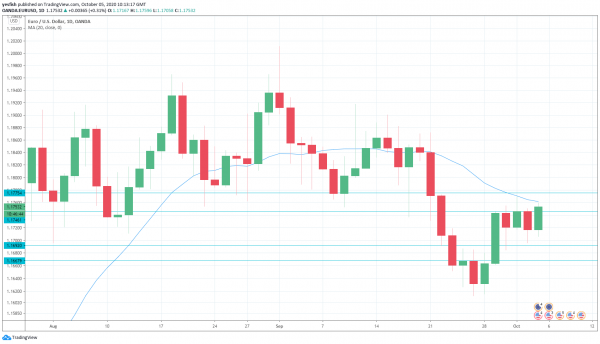EUR/USD has recorded modest gains on Monday. In the European session, EUR/USD is trading at 1.1752, up 0.30% on the day.
Deflation concerns in Eurozone
With the Covid-19 pandemic continuing to dampen economic activity, inflation levels remain low in the major world economies. This has become an acute problem in the eurozone, with inflation readings falling into negative territory. Headline consumer inflation fell to -0.3% in September, which marked a second straight month of deflation. The reading was the worst since 2016. Core CPI fell from 0.4% to 0.2%. The central bank has slashed interest rates into negative territory and implemented quantitative easing programs in the trillions of euros, but economic activity remains sluggish and inflation continues to fall. No relief is expected anytime soon, with ECB President Lagarde stating last week that inflation “is expected to remain negative over the coming months”.
How will the ECB respond? Policymakers have said they need more data before making any decisions on new stimulus, so a move in October is unlikely. That leaves December has the month to circle in red, when the ECB publishes its economic forecasts, including inflation. This would be a logical time for the ECB likely to increase its EUR 1.35 trillion Pandemic Emergency Purchase Programme. Such a move would likely weaken the euro, since QE increases the money supply.
The new trading week started out positive data out of the eurozone. German and Eurozone Services PMIs were both upwardly revised, with the German PMI adjusted to 50.6 and the Eurozone PMI to 48.0. As well, Eurozone retail sales jumped 4.2% in August, after two straight declines. This easily beat the forecast of 2.4 percent.
EUR/USD Technical
- EUR/USD tested resistance at 1.1746 in the Asian session. The next resistance line is at 1.1775
- There is support for the pair at 1.1692, followed by a support line at 1.1667
- The pair continues to put upwards pressure on the 20-day MA. If the pair breaks above this line, it is a sign of an upward trend













